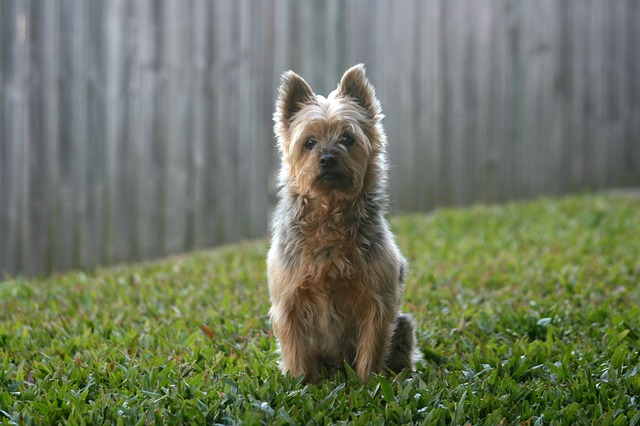Silky Terrier is a breed of dog with a long, fine coat of hair. His personality is generally friendly and energetic. The Silky Terrier is sometimes confused with the Yorkshire Terrier, but they are two separate breeds with different traits. In fact, silky is bigger than a Yorkie and actually has more in common with another cousin, the Australian Terrier.
Description
– Male and female dogs of this breed can reach a height of 21 to 23 centimeters
– Male and female dogs of this breed can reach a weight of 4 to 5 kg.
– The lifespan of these dogs is from 12 to 15 years.
The Silky Terrier is compact, moderately low, of medium length with a refined construction. The head is of medium length and with a slightly short distance between the eyes. She has moderately deep and wide breasts. Moderately long and straight back that is slightly longer than these puppies are tall. The ears are spiky. The tail is straight and is usually trimmed.
The fur is long, smooth, silky, and shiny. The length of the hair reaches 15 centimeters. The fur is shorter on the groin and legs. They do not have an inner layer of fur. The most preferred fur color is blue as steel, but the most common colors are dark or light blue and gray with brown parts.
Temperament
Silky terriers are sociable, kind, smart, and attentive. They are wonderful pets for both children and the elderly. They want to nurture them and give them words of praise, but they can easily become more possessive of their family and protect it too. Although they are quite small, they can make a lot of noise. If you need to live without a partner, you will need to get to know them in time, ie while the terriers are small puppies so that the cats do not have problems later.
Health
Dogs bred to these standards are less likely to inherit health conditions. Here are some health issues that a silky terrier should be aware of:
-Hip dysplasia
-Patellar curse
-Legg-Calve-Perthes disease
-Diabetes
Care
The fur of these terriers should be cared for regularly and trimmed occasionally to look their best. It is best to brush and comb it regularly for 15 minutes a day. Bathe it occasionally. It is well known that these terriers do not move and do not have that typical dog smell.
The silky terrier has a cap that is flat, shiny, and fine in texture. Hair is constantly growing and very similar to human hair. Commitment to routine care is absolutely essential if you have this type of dog. Silky will need brushing and combing several times a week. A regular hairstyle will be required to keep the coat at the desired length. Many owners choose to keep their coat trimmed short for easier disposal. Overall, the breed tends to shed very little. You may want to buy this dog monthly.
Be sure to maintain your nails so that your silky feet stay healthy and comfortable. Oral hygiene is important for health and should be cleaned daily by your dog’s teeth or at least two to three times a week.
This is a breed that doesn’t like long. Silky may “act” because of boredom or loneliness. Be prepared to give enough attention to games and other types of interactions.
Silky Terrier is an active but not hyperpile that requires daily exercise. Expect to bring your dog for a walk and spend time in an active game such as fetching. In addition, silk terrier can enjoy excellence in various dog sports.
They will not lower when confronted with larger dogs and they are able to escape in the pursuit of squirrels and other small prey, so you will have to walk this dog on a leash and train it properly. You will need to take good care of him if you take him to a dog park.
Your silk can play in a fenced yard, but be aware that this breed loves to dig. This means that they will give you some unwanted help in the garden and that they can dig a tunnel under the urges. They will hunt and chase small prey. This makes them a poor match for households that include gerbils, guinea pigs, or rabbits.
As with any breed, thorough training and proper socialization are essential to a silky terrier. They are often reserved around new people as well as new situations and socialization can help eliminate the problems of excessive territoriality and aggression.
Feeding
Your silky terrier should be fed two meals a day for a total of no more than 3/4 cup dry dog food per day. Your dog’s needs will vary depending on size, activity level, age, and other factors. It is best not to allow yourself free food and not to be fooled into giving your dog snacks of human food. Even a small amount of weight gain can be significant for a small dog and obesity will shorten the life.
Puppies
If you decide to buy puppies of this breed, try to do it from a verified kennel. When silky terrier puppies are small, they need to be fed special dog food to gain immunity.
History
This growth was initially known as Sydney Silky. The name was changed to Silky Terrier in 1955. Growth is believed to have been obtained by crossing the Australian Terrier and the Yorkshire Terrier. From 1907 until today, these terriers are one of the most popular and favorite pets everywhere.





